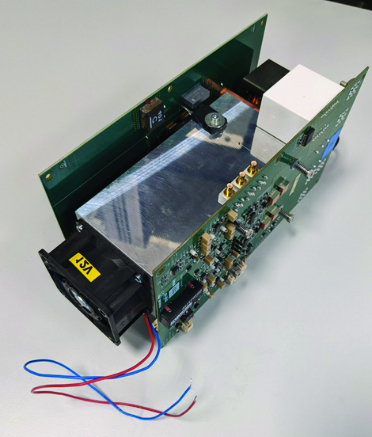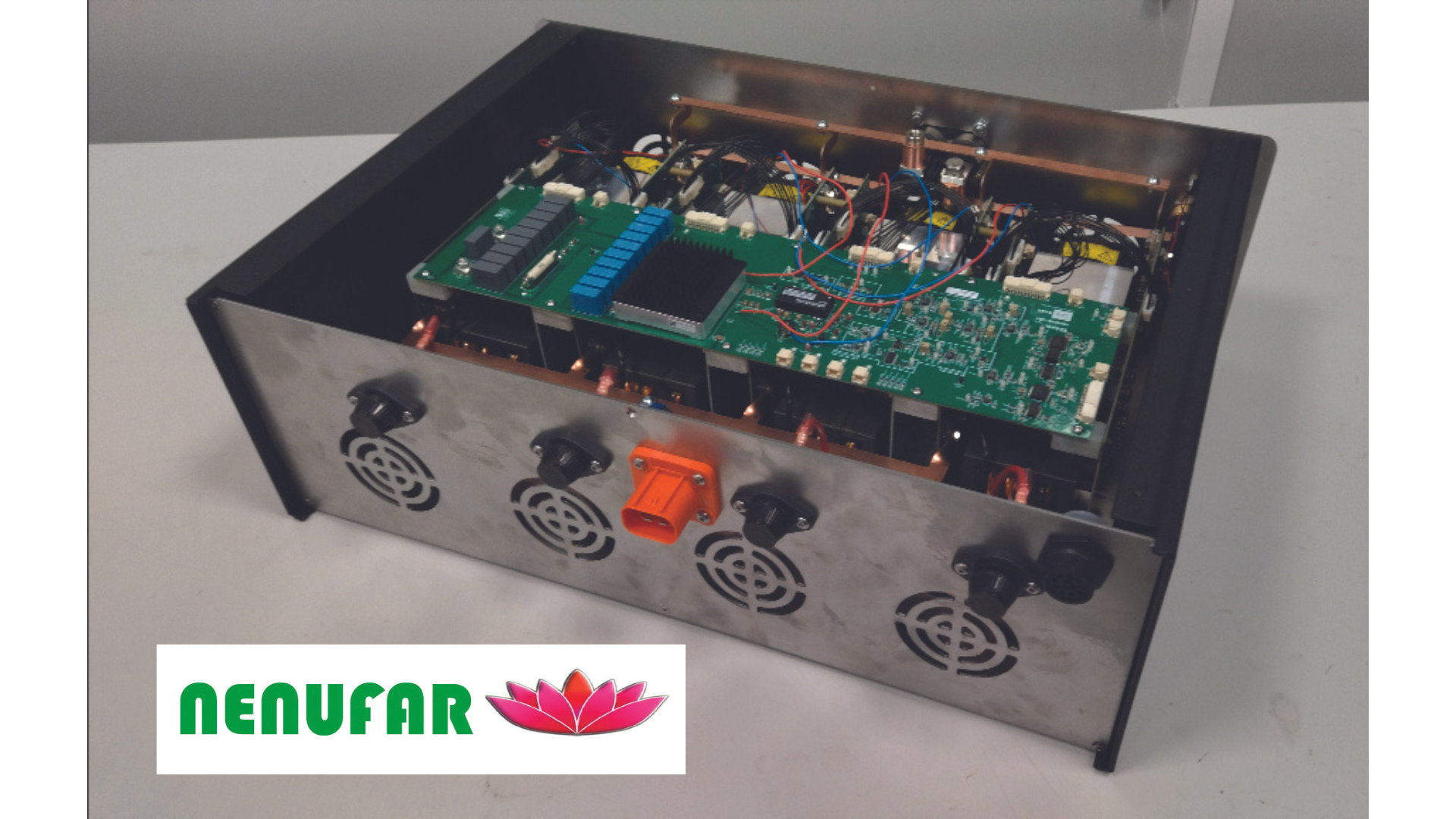A high-density power converter/charger designed specifically for aeronautics
As part of the European NENUFAR project,
CEA has developed an innovative converter dedicated
to aeronautical applications. It charges the aircraft's
lithium-ion batteries and provides DC/DC conversion
to power auxiliary components such as instrument panels,
interior lighting and USB sockets.
Based on wide-band gap Gallium Nitride (GaN)
transistors, this converter features four 2 kW modules
that can be used separately or together. Its power
density is twice that of existing solutions.
What's new?
- Two functions with a single integrated converter:
- Charge lithium-ion batteries - Generate low voltage for an aircraft's DC bus
- High power density thanks to optimized architecture:
2 kW/kg as compared to 1 kW/kg for existing solutions
- Record efficiency: 96.5% versus 95% for existing conversion solutions, equivalent to a 30% reduction in losses
- Longer service life thanks to a modular architecture
that reduces stress on all components
|
What's next?
This innovative converter can be adapted to specific projects and offers greater efficiency, higher power density and lower costs. Transfer to other industrial partners such as players in the automobile industry can be achieved within two to three years.
| 
 |


Converter test with battery Complete converter with four parallel modules